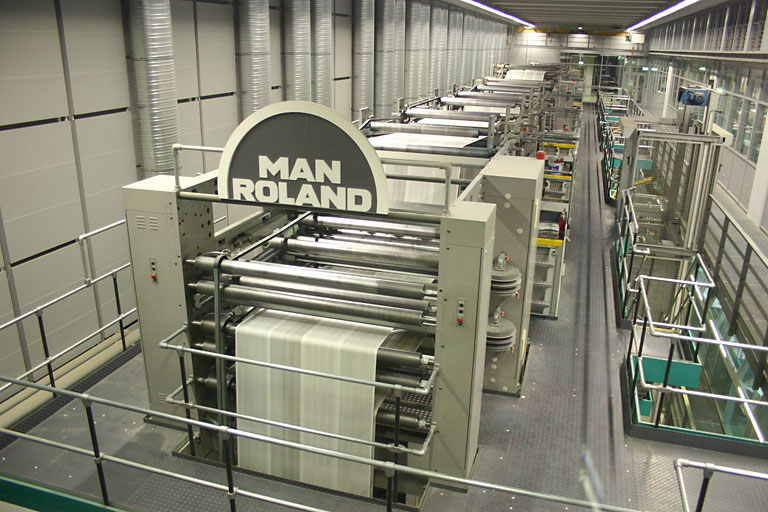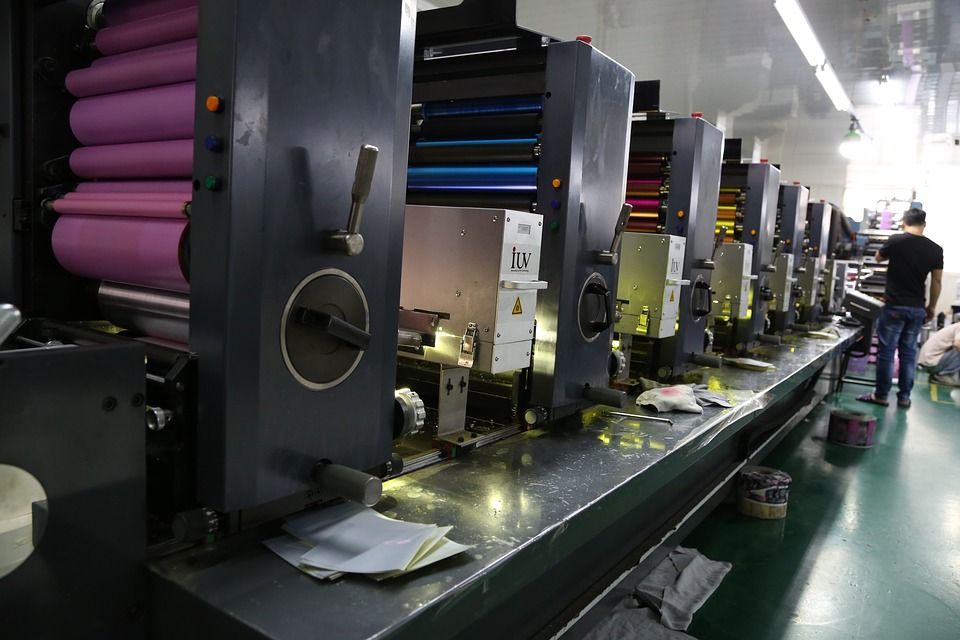The first cylinder used in the offset printing process is the ‘plate’ cylinder. This thin cylinder has a plastic or aluminium plate around it. Each plate is customized according to the text and images to be printed onto the paper. The plate cylinder has been pre-treated to have the images attract ink and repel water. When the plate cylinder spins, it will make contact with rollers that apply the ink and water.
The second cylinder is the ‘offset blanket’ cylinder. This cylinder has a rubber blanket around it and turns in the opposite direction to the plate cylinder. When both cylinders roll against each other, water is squeezed away and ink is transferred onto the rubber blanket. This creates a mirror image of the ink design.
The third cylinder in the offset lithography process is the ‘impression’ cylinder. Made of clean steel, it turns in the opposite direction to the blanket cylinder. The impression cylinder transfers the ink as it presses paper against the rubber blanket.
Offset printing presses are fast and efficient – they can print up to 18,000 sheets per hour. With each sheet containing up to 48 pages of A4 or letter-sized content. A typical offset press can print eight pages in one sheet – which translates to around 120,000 pages per hour!
Offset printing , what is it exactly?
This printing technique is called ‘offset’ because it does not transfer ink directly onto paper like other printing methods do. Instead of going from plate to paper in two steps, ink is transferred first to a rubber cylinder and then printed on paper. The three-step offset method reduces wear and tear on the lithographic printing plate, thus prolonging its lifespan.

An offset printer includes three cylinders:
Plate cylinder
Offset blanket cylinder
Impression cylinder
In offset printing, the image area and the non-image area co-exist on the same flat surface.
Offset lithography works on the principle of oil and water separation. The plates have been treated to make image areas attract ink and non-image areas attract water to repel the ink. When water and ink are applied by the rollers to the plate, the oil-based ink sticks to the image while water sticking to the non-image area repels it.
Some offset printing presses use a silicone layer that repels ink instead of water. These systems are called ‘dry’ or ‘waterless’ offset presses.








No comment